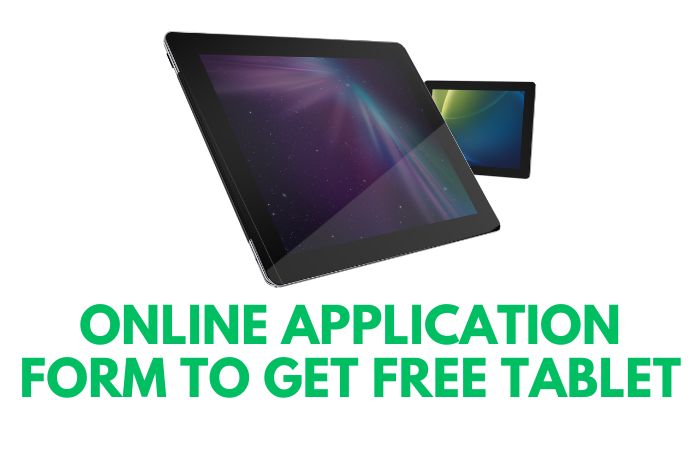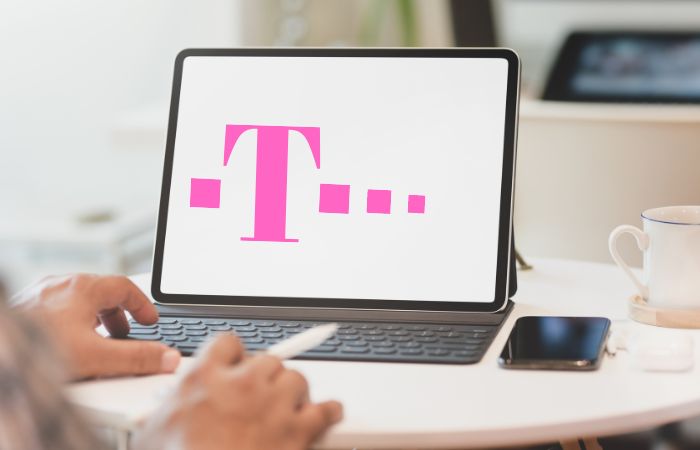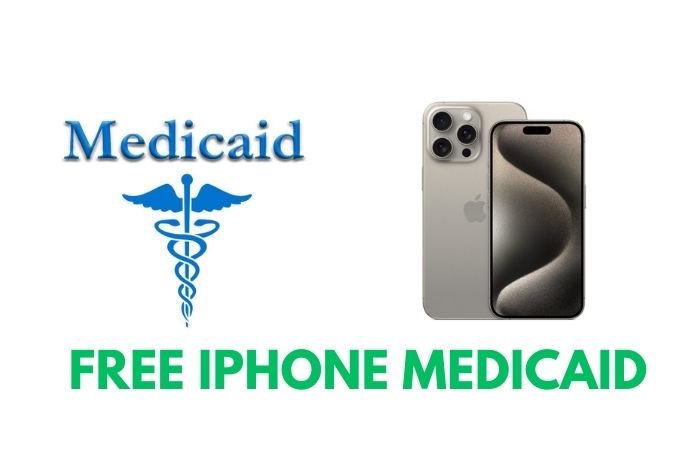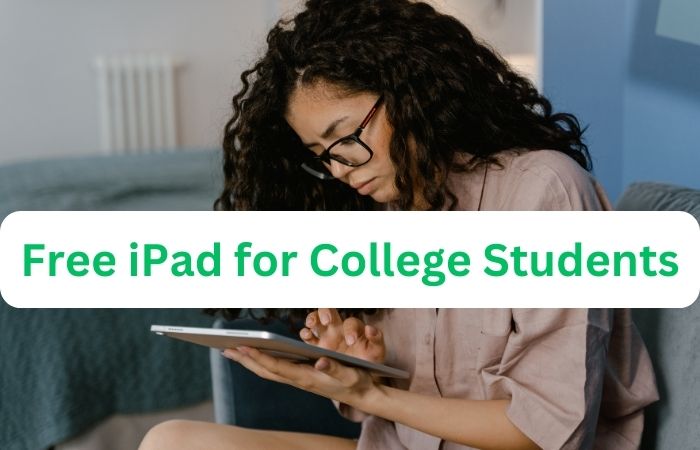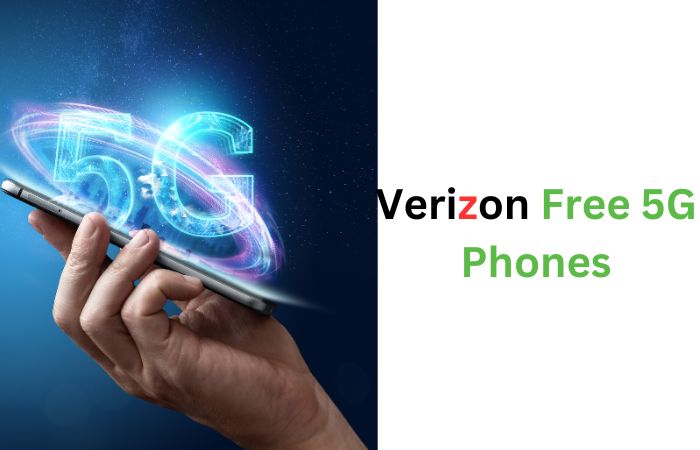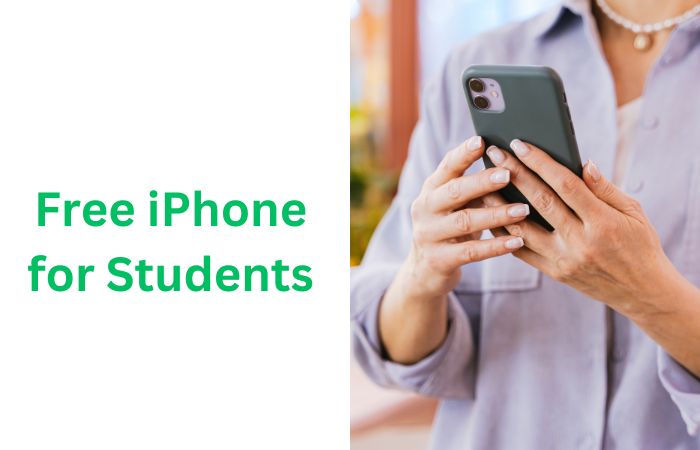Online Application Form to Get Free Tablet
If you clicked on this post, chances are you’ve been on the hunt for that elusive online application form to secure a FREE tablet.
Well, the search ends here.
In this article, not only will I provide the direct path to that coveted Online Application Form to Get a Free Tablet, but I’ll also walk you through the process, step by step. So, get ready and let’s get straight to it!
Understanding the Free Tablet Programs
Alright, let’s break it down. Free tablet programs are like those hidden gems in video games—except they’re real, and they don’t require you to fight a dragon to claim them. These programs are designed to level the digital playing field by offering tablets at no cost to those who might otherwise miss out on the digital revolution.
What Exactly Are Free Tablet Programs?
A world where everyone has the same access to technology, regardless of their wallet’s weight. That’s the vision behind free tablet programs. They’re initiatives, often set up by governments or in collaboration with private companies, to hand out tablets like lifelines to the internet, education, and a host of opportunities that come with being connected.
The Dynamic Duo: Government and Private Partnerships
Think of government and private companies as the dynamic duo, working together to bring these tech goodies to the public. The government often lays the groundwork with policies and funding, while private companies bring in their tech expertise and resources. It’s a powerful partnership that makes sure tablets don’t end up as just another item on a wish list for many.
Spotlight on the Affordable Connectivity Program (ACP)
The ACP is like the VIP of free tech programs. It’s a U.S. government initiative that’s all about making sure households with lower income can get in on the broadband action without the financial strain. And it’s not just about discounted service; it’s about providing the devices, like tablets, to access that service. The ACP, along with other similar programs, is the bridge over the digital divide, connecting people to possibilities.
Eligibility Criteria
Before we jump into the ‘how’, let’s talk about the ‘who’. Not everyone can snag a free tablet just because they want one—it’s not a free-for-all candy store. There are certain boxes you’ve got to check first, and they’re all about making sure these tech treats go to the folks who need them most.
Income Requirements: Show Me the Money (Or Lack Thereof)
Here’s the deal: your income needs to play ball with the guidelines set by the program. Most of these tablet programs set their sights on households earning at or below 200% of the Federal Poverty Guidelines. Why? Because they’re targeting the gap where technology is a luxury that’s just out of reach. If your bank account isn’t bursting at the seams, you might just be in the running.
Government Assistance Programs: The Golden Ticket
If you’re already getting a helping hand from Uncle Sam through programs like Medicaid, SNAP (Supplemental Nutrition Assistance Program), or even Lifeline, you’re likely on the VIP list for a free tablet. These programs are like a backstage pass, proving you could benefit from a little extra tech support.
Special Considerations: Students, Veterans, and More
And then there are the special shout-outs. If you’re a student clutching a Pell Grant, a veteran who has served your country, or part of another group that often gets a high-five for extra support, you might be pre-approved for tech assistance. These programs recognize that you’ve got unique needs or have done your part for the country, and now it’s time for them to lend you a hand.
So, do you see yourself in any of these categories? If you’re nodding yes, you’re on the right track. Stick with me, and we’ll walk through the ‘how’ of turning that eligibility into a shiny new tablet.
Finding the Right Program for Free Tablets
Navigating the maze of free tablet programs can feel like you’re in an episode of a detective series, trying to spot the real deal. But don’t worry, you don’t need a magnifying glass for this mission. Here’s how to sift through the noise and find the program that fits like a glove.
Research Like a Pro
First up, research is your best friend. Hit up the internet with a search for “free tablet programs,” and you’ll see a buffet of options. But don’t just click on the first link that winks at you. Check out government websites, community boards, and non-profit organizations—they’re often the ones running these programs or know who does.
The Who’s Who of Tablet Programs
Keep an eye out for names you know. Carriers like T-Mobile, Verizon, and AT&T sometimes offer programs or can point you to one. Organizations like EveryoneOn or PCs for People are like the fairy godparents of tech access, too. They’re in the biz of connecting people to tech, and they might just have the hook-up you need.
Scam-Spotting 101
Now, let’s talk about the elephant in the room—scams. They’re the rotten apples in the barrel, and you need to steer clear. Here’s the skinny on keeping it legit:
- Official Channels: If it’s a government program, it’ll have a .gov website. That’s like a seal of approval right there.
- No Cash, Please: Legit programs won’t ask for money. If they’re asking for your credit card, wave goodbye and close that tab.
- Check the Fine Print: Real deals will give you the lowdown on what you’re getting into. No sneaky small print.
- Customer Service: A real program has real people you can talk to. If you’re just talking to bots or getting the cold shoulder, something’s fishy.
Finding the right free tablet program might take a bit of legwork, but it’s worth the hustle. And once you’ve found a match, you’re halfway to tech heaven. So, put on your detective hat, and let’s get to work!
The Application Process
Alright, you’ve got your map, and you’re ready to embark on the quest for a free tablet. Here’s the path you’ll take, marked with clear steps to ensure you don’t wander off into the wilderness. Let’s break down the application process into bite-sized pieces.
Step 1: Locating the Application Form
This is your starting point. You’ll want to find the ‘X’ that marks the spot. Here’s how:
- Visit the official website of the program you’ve identified as your best bet.
- Navigate to the section typically labeled ‘Apply’, ‘Application’, or ‘Get Started’.
- Look for a form that can be filled out online or a PDF that can be downloaded and printed if you’re going old school.
Step 2: Filling Out Personal and Eligibility Information
Now, you’re at the heart of the application. You’ll need to fill in the blanks with:
- Personal details like your full name, address, and contact information.
- Eligibility information that proves you’re the right candidate for this treasure. This could include your income details or proof of participation in other assistance programs.
Step 3: Attaching or Uploading Required Documents
You’ve reached the checkpoint where you need to back up your claims with some solid evidence. This may include:
- Scanned copies or clear photos of your ID.
- Documents that verify your income or program participation.
- Any other paperwork the application asks for, like proof of residency or a student ID.
Step 4: The Importance of Accuracy and Honesty
Before you hit that ‘Submit’ button, pause and review. Make sure every piece of information you’ve entered is as accurate as a sniper’s aim. And honesty? Non-negotiable. The truth will set you free (and get you a free tablet). Fabrications can lead to application denial and even legal trouble.
Required Documentation
As you prepare to stake your claim for a free tablet, you’ll need to gather some paperwork. It’s like assembling the right gear for a quest—without it, you won’t get far. Here’s the arsenal of documents you’ll typically need:
The Documentation Checklist
- Proof of Identity: A government-issued ID card, driver’s license, or passport.
- Proof of Income: Recent tax returns, pay stubs, or official letters stating your benefits.
- Proof of Program Participation: If you’re part of government assistance programs, bring out those official documents or cards that show you’re enrolled.
- Educational Proof: Students may need a current school ID or an official letter from their institution.
- Special Status Documents: Veterans or seniors may need to provide specific documents proving their status.
Gathering Your Documents
- Requesting Documents: For some, you might need to request copies from government offices, employers, or your school’s administrative department.
- Scanning and Preparing: If you’re submitting online, you’ll need digital copies. Use a scanner or a scanning app on your smartphone to create clear, legible copies.
- Organizing: Label your files clearly and keep them in a secure folder on your computer or in a cloud storage service for easy access during the application process.
Safeguarding Your Privacy
- Secure Connections: Always use a secure internet connection when submitting personal information online. Public Wi-Fi is a no-go zone for this task.
- Data Protection: Ensure the program’s website uses encryption (look for “https” in the web address and a lock icon).
- Information Sharing: Only provide information that is necessary and requested. If something feels off, double-check with the program’s contact center.
- Document Storage: After you’ve submitted your application, store your documents securely and consider password protection for digital files.
Remember, these documents are the keys to unlocking your free tablet, so handle them with care. Ensure everything is up-to-date, accurate, and ready to go. With your documents in order, you’re one step closer to crossing the digital divide.
After Submission
Congratulations, you’ve hit the ‘Submit’ button! The application for your free tablet is now soaring through the digital ether to its destination. But what happens next? Here’s what you can expect in the aftermath of your application submission.
1. The Waiting Game
- Confirmation: You should receive an email or on-screen confirmation that your application has been received. If not, contact the program to ensure it went through.
- Processing Time: The wheels of bureaucracy turn at their own pace. Typically, you might be looking at a wait time of several weeks to a few months. Patience is key.
- Status Checks: Many programs will have an online portal or a customer service number where you can check the status of your application. Keep your confirmation number handy for this.
2. If They Call You Back
- Requests for Additional Information: It’s not uncommon for the program to ask for more details or clarification. This isn’t a red flag; it’s just part of the process.
- Timely Response: If you’re asked for more information, provide it as quickly as possible. Delays on your end can mean delays in getting your tablet.
- Keep Copies: When you send additional information, keep copies for your records. If there’s ever a question about what was submitted, you’ll have the evidence at your fingertips.
3. Managing Expectations
- Approval Notices: If your application is approved, you’ll receive a notification outlining the next steps to claim your tablet.
- Denial Notices: In the event your application is not approved, you should be informed of the reasons why. This is valuable information if you choose to reapply or appeal the decision.
4. Staying Proactive
- Follow-Up: If you haven’t heard back within the expected time frame, don’t be shy about reaching out for an update.
- Keep Documentation: Maintain a file with all your application materials and correspondence. This will be crucial if you need to reference your application or if there are any discrepancies.
Submitting your application is a big step forward, but it’s not the end of the journey. Stay engaged, stay informed, and before you know it, you might just be the proud owner of a new tablet, courtesy of the program you applied to.
Receiving the Tablet
Your application has been approved, and a free tablet is on its way to you. It’s almost like waiting for the final episode of your favorite series to drop. Here’s what to expect and how to handle the big moment.
The Arrival
- Shipping Notification: You’ll typically receive an email or a message with shipping details. This will often include a tracking number so you can monitor your tablet’s journey to your doorstep.
- Delivery Time: Depending on the program and your location, it could be a few days to a few weeks before your tablet arrives. Make sure someone is available to receive it if required.
Unboxing Your Tablet
- Inspection: Upon arrival, inspect the tablet for any damage or issues. If there’s a problem, report it immediately to the program administrators.
- Set-Up: There will likely be instructions included on how to set up and activate your new tablet. Follow these carefully to get connected.
Understanding the Terms of Use
- Usage Restrictions: Some programs may have guidelines on how you can use your free tablet. For example, it may need to be used for educational purposes if it was provided by a school program.
- Software Limitations: The tablet may come with pre-installed software, and you might be limited in what additional software you can install.
- Ownership: Check if there are any conditions regarding ownership. Some programs may require you to return the tablet if you no longer meet the eligibility criteria.
Any Restrictions?
- Data Plans: If your tablet comes with a data plan, understand the limits. There might be a cap on data usage or restrictions on international use.
- Maintenance and Repairs: Know who to contact if your tablet needs repairs or maintenance. There may be support provided as part of the program.
- Resale Prohibition: Often, free tablets cannot be sold. They are provided to you for personal use and may need to be returned or recycled if you no longer need them.
Receiving your tablet is a rewarding end to your application journey, but it’s also the beginning of a new chapter in your digital life. Make sure you understand all the terms so you can make the most of your new device without any hiccups.
If Your Application is Rejected
It’s not the news anyone wants to hear, but sometimes the answer is “no.” If your application for a free tablet is rejected, it’s not the end of the road. Let’s unpack the reasons why this might happen and what you can do about it.
Common Reasons for Rejection
- Income Above Threshold: If your income is higher than the program’s limit, your application might be declined.
- Incomplete Application: Missing information can lead to a rejection. Double-check that all fields are filled out correctly.
- Documentation Issues: Incorrect or outdated documents can be a stumbling block.
- Program Capacity: Sometimes, programs run out of funding or devices. It’s not about you; it’s about timing.
Next Steps After Rejection
- Review the Rejection Notice: Understand the specific reasons for your application’s denial. This information is key to your next move.
- Rectify and Reapply: If the rejection is due to fixable issues like incomplete forms or the wrong documents, correct these and reapply.
- Appeal: Some programs offer an appeal process. If you believe there’s been an error, use this route to have your application reconsidered.
Alternative Avenues for a Free or Discounted Tablet
- Other Programs: Look for other free tablet programs. There’s more than one fish in the sea.
- Discount Offers: Keep an eye out for discounts or special offers from retailers, especially during sale seasons like Black Friday or back-to-school promotions.
- Non-Profit Organizations: Some non-profits provide free or low-cost technology to those in need. It’s worth reaching out to see if you qualify.
- Educational Institutions: If you’re a student, check with your school or university. They often have programs to assist students in need of technology.
- Community Libraries or Centers: Sometimes, local libraries or community centers have lending programs or may know of local resources that can help.
Frequently Asked Questions (FAQs)
How long will it take to process my application?
Processing times can vary widely depending on the program and the volume of applications they receive. Generally, expect anywhere from a few weeks to a couple of months.
Can I apply for a free tablet if I’m already receiving other government benefits?
Absolutely! In fact, being a recipient of other government benefits often makes you a prime candidate for these programs.
What should I do if I don’t have all the required documents?
Reach out to the issuing authorities (like the IRS for tax documents or your local benefits office) as soon as possible to obtain the necessary paperwork. In the meantime, let the program know you’re in the process of securing them.
Will I have to return the tablet if my financial situation improves?
This depends on the specific terms of the program. Some may require you to return the device, while others don’t. Always read the fine print before accepting the tablet.
Are these tablets new or refurbished?
It varies. Some programs offer brand new tablets, while others provide refurbished ones that are in good working condition.
Can I choose the type of tablet I receive?
Typically, no. The program will have a specific model or range of models that they distribute based on availability.
What if I need help with the application process?
Most programs have a customer service line or support email. Don’t hesitate to reach out for help if you’re stuck.
Need More Help?
If your question wasn’t answered here or you need a hand with the application process, here’s how to get in touch for further assistance:
- Contact Information: Look for a ‘Contact Us‘ section on the program’s official website. You’ll usually find a phone number, email address, or even a live chat option.
- Help Desk: Some programs may have a help desk or support center that you can visit in person, especially if they’re locally operated.
- Community Resources: Local community centers, libraries, or non-profits may also offer assistance with the application process.
Additional Resources
Embarking on your journey to secure a free tablet is commendable, and having the right resources can make all the difference. Below, you’ll find a treasure trove of links and information to guide you through the application process and beyond.
Application Portals
The official site for the ACP, which provides a wealth of information and the application portal.
Here you can find details on how to apply for the Lifeline program, which offers discounts on phone and internet services.
A non-profit dedicated to eliminating the digital divide, offering tools to find low-cost internet service and computers.
Support Contacts
- FCC Help Center: For questions about the ACP, you can reach out to the FCC’s consumer center at 1-888-225-5322.
- Lifeline Support: For assistance with Lifeline, contact their support center at 1-800-234-9473 or via email at lifelinesupport@usac.org.
- EveryoneOn Support: Get help finding the right program for you through EveryoneOn’s contact form on their website.
Further Reading
An organization providing insights and information on the digital divide and how to overcome it.
Offers research and reports on internet and technology use, including studies on the digital divide.
A resource that advocates for digital equity and inclusion, with research and policy recommendations.
Remember, while the internet is a vast ocean of information, the links provided here are like lighthouses guiding you to safe harbor. Use these resources to inform your journey, reach out for help when needed, and stay enlightened on the importance of digital inclusion.
